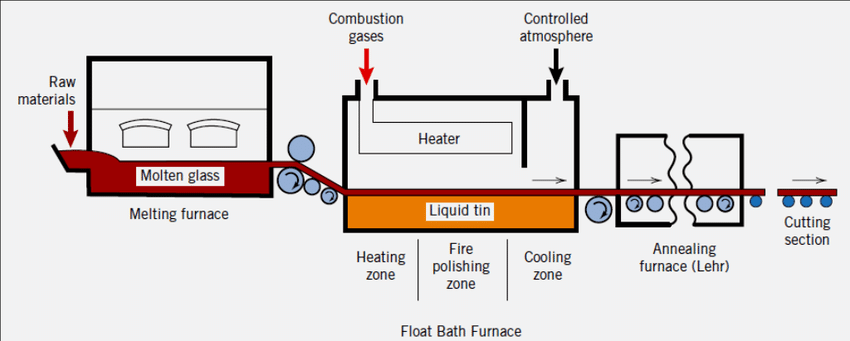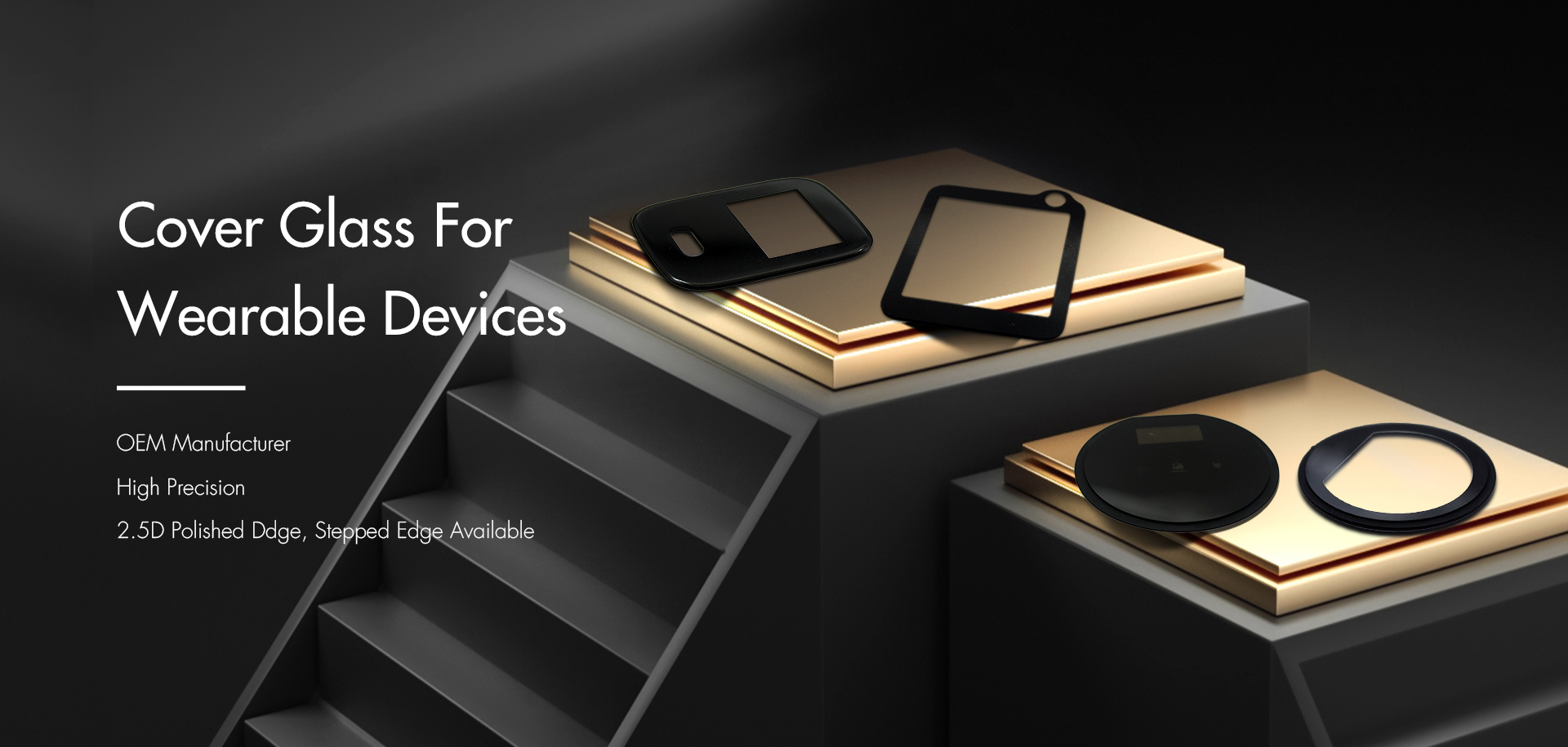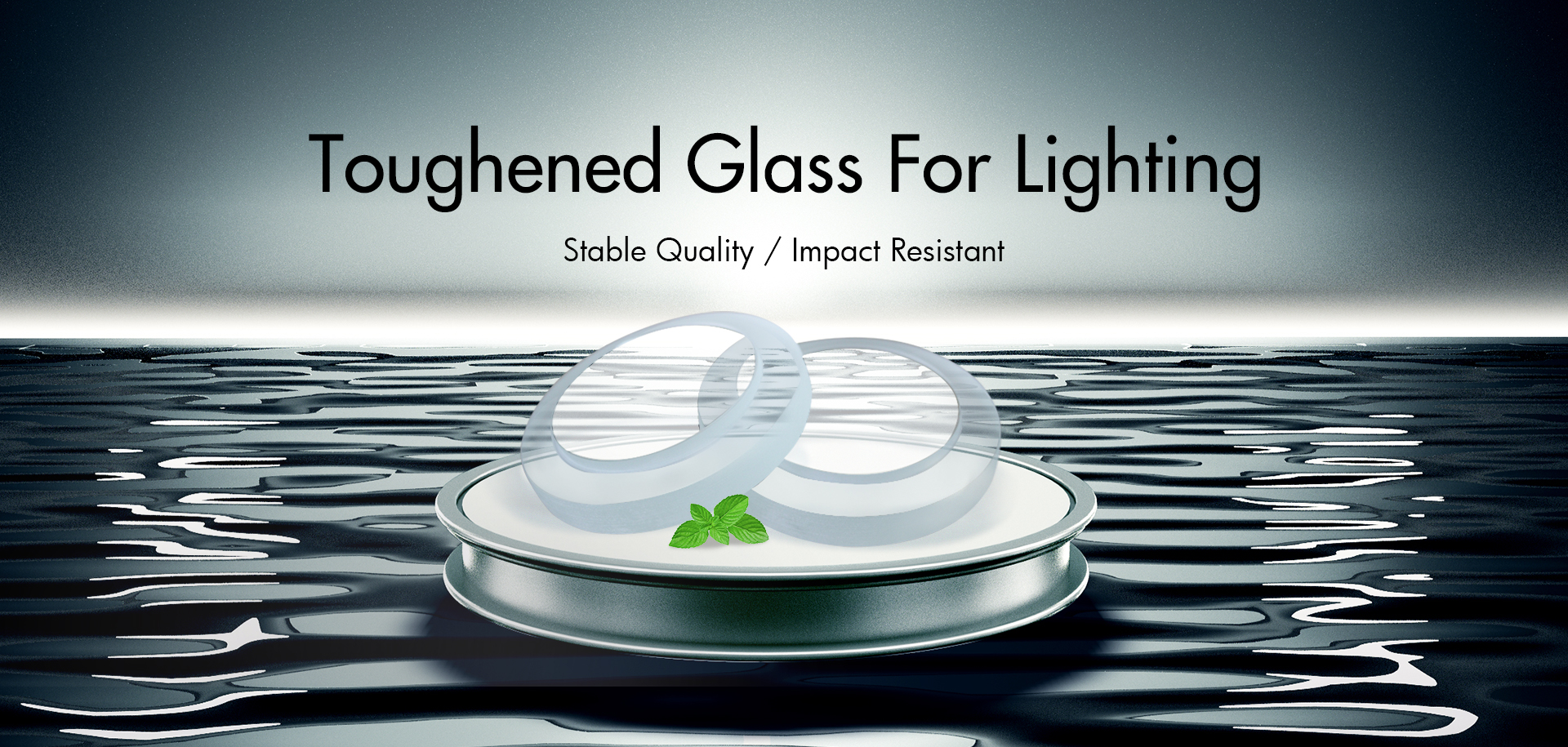Float glass is named after the molten glass floats on the surface of the molten metal to obtain a polished shape. The molten glass floats on the surface of the metal tin in a tin bath filled with protective gas (N2 + H2) from the molten storage. Above, flat glass (plate-shaped silicate glass) is formed by flattening and polishing to form a uniform thickness, flat and polished glass zone.
The production process of float glass
The batch material prepared from various qualified raw materials according to the formula is melted, clarified and cooled to a molten glass of about 1150-1100°C, and the tin is continuously poured into the molten glass through the flow channel connected to the tin bath and the launder deep into the tin bath In the tank and floating on the surface of the relatively dense tin liquid, under the combined action of its own gravity, surface tension, the pulling force of the edge puller and the transition roller table, the glass liquid is spread, flattened, and thinned on the tin liquid surface ( It is formed into a glass ribbon with flat upper and lower surfaces. It is drawn by the transition roller table at the tail of the tin tank and the annealing pit driving roller connected with it, and is led to the overflow roller table, conveyed into the annealing pit, and then annealed. After cutting, the float glass product is obtained.
Pros and cons of float glass technique
Compared with other forming methods, the advantages of float method are:
1. The product quality is good, such as the surfaces are flat, parallel to each other, and high transmittance.
2. The output is high. It mainly depends on the melting volume of the glass melting cellar and the drawing speed of the glass ribbon forming, and it is easier to increase the plate width.
3. It has many varieties. The process can produce thickness from 0.55 to 25mm for various purposes: at the same time, different self-colored and online coating can also be made by float process.
4. It is easy to scientifically manage and realize full-line mechanization, automation, and high labor productivity.
5. Long continuous operation period is conducive to stable production
The main disadvantage of the float process is that the capital investment and the floor space are relatively large. Only one thickness of product can be produced at the same time. An accident may cause the entire line to stop production, because a strict scientific management system must be required to ensure that the entire line of personnel and equipment, Devices and materials are in good condition.

Saida Glass purchase class A electrical level float glass from reliable agent to meet our customer’s high demand for tempered glass, cover glass for touch screen, protective glass for display in various area.
Post time: Aug-06-2020










